10 Common Risks in Software Development | How to Minimize?
Contents
The term “no one is immune to risks” is no longer true in today’s world. Every industry sector and market niche has its own pitfalls and bottlenecks that must be taken into account and IT is no exception. According to Statista, around $5473 million were spent worldwide for handling integrated risk management in the IT industry in 2021.
In this article, you’ll find a list of most popular risks during an IT project, which helps better your risk management in software development.
10 Common Risks in Software Development
Of course, you shouldn’t expect to find a single risk list that fully reflects all potential situations that arise during a development project here. However, we managed to gather 10 most common risks to facilitate your risk management in software development.
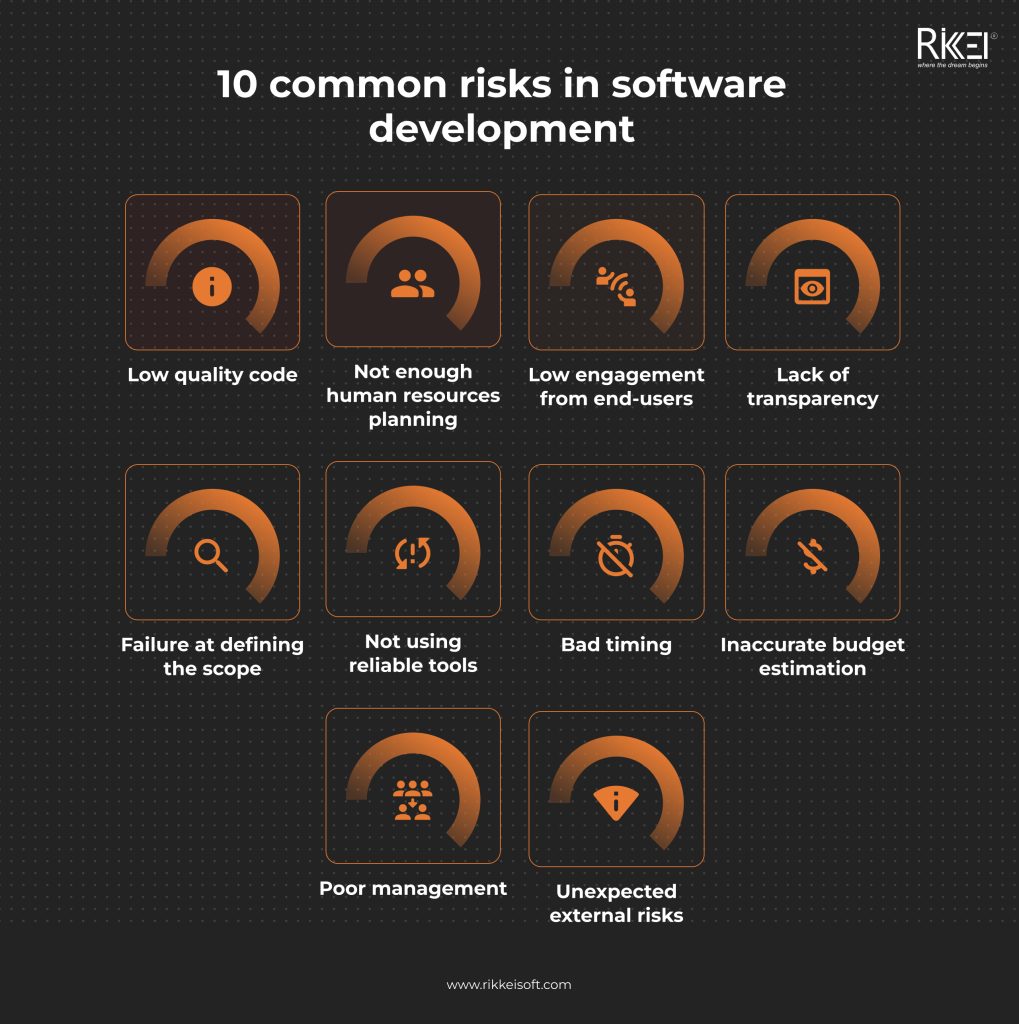
1. Low quality code
The most common software development risks can’t be mentioned without poor quality of the code. This is also a headache for clients as for the most part, they don’t understand the code and hence failure to assess it. The causes of this risk varies, including but not limited to:
- Lack of professionalism and low expertise of development team members
- Continual changes in product requirements
- The technology used lacks a sufficient level of development and community support (so it cannot provide the functionality needed)
- Too sophisticated multi-part project
- The implementation of project modules (on an existing platform or application, for instance) turned out to be harder than expected.
One outcome is, at the final stage of the project, the product doesn’t work because the developers wrote low-quality code with a lot of bugs, and no testing.
Solutions:
- User Acceptance Criteria needs to be implemented.
- Clients can hire a project manager or CTO to evaluate the code quality and supervise the developing process.
- Sticking to the Clear Coding Standards and Guidelines of the company.
- Have the product tested carefully.
- When choosing a developing team or a company to work with, clients should look at some of their previous projects, have a technical interview, or check out their Clear Coding Standards.
2. Not enough human resources planning
Another risk can be lack of adequate planning in human resources. Sometimes, someone in the process, such as a stakeholder or a team member, is absent unexpectedly for various reasons. This therefore leads to the deferment of the project until the vacancy can be filled, which prolongs the project.
Solutions:
- Keep a record of the whole process by the development team.
- A good internal HR department so that if such a situation occurs, it can be handled effectively.
- The Project Manager should frequently monitor his team’s workload schedule. So, if a team member is absent, they can be quickly replaced by someone from another team.
3. Low engagement from end-users

This is among the most popular software development risks because the success of software is virtually decided by how users engage with it. Through the user engagement, you have a chance to understand their feedback. This risk can occur in cases such as:
- Research to define the target audience of the project and its demands is insufficient.
- Solutions to the important issues of the target audience are not selected correctly.
- Product UX/UI design is outdated, unappealing, incompatible with many devices.
Solutions:
- User testing as well as feedback
- Focus groups
- Regular releases
- Beta testing
Create appealing UI/UX software design
4. Lack of transparency
This issue can originate from management levels in a company. Many of them just hand over all the project documentation to their employees without checking if they get enough needed information for their tasks. Consequently, there is likely to be late deliveries, extra costs, and reduced quality. Even in some cases, there can be an indefinite delay of the project if the software company cannot deliver something their clients want in the final product.
Solutions:
In every project, there needs to be a clear line of communication between both sides, so that any problem that arises can be solved promptly. To do this, you can:
- Establish a shared repository, where both parties can upload tasks and deadlines.
- Hold regular meetings (both online and face-to-face) to update the project status.
- Keep a record of all activities to track progress and mitigate security risks in software development with advanced resolution on time.
- Ask the sales rep or customer service manager to notify you if there is any problem with the team they’re working with.
5. Failure at defining the scope
The scope of the project is popularly seen as a feasible way of mitigating common risks in software development. This factor decides how much work will be done as well as what functions need to be developed. Therefore, your software cannot function correctly if you fail to define the scope properly. The lack of defining the scope clearly could result in the failure of your product and a terrible user experience.
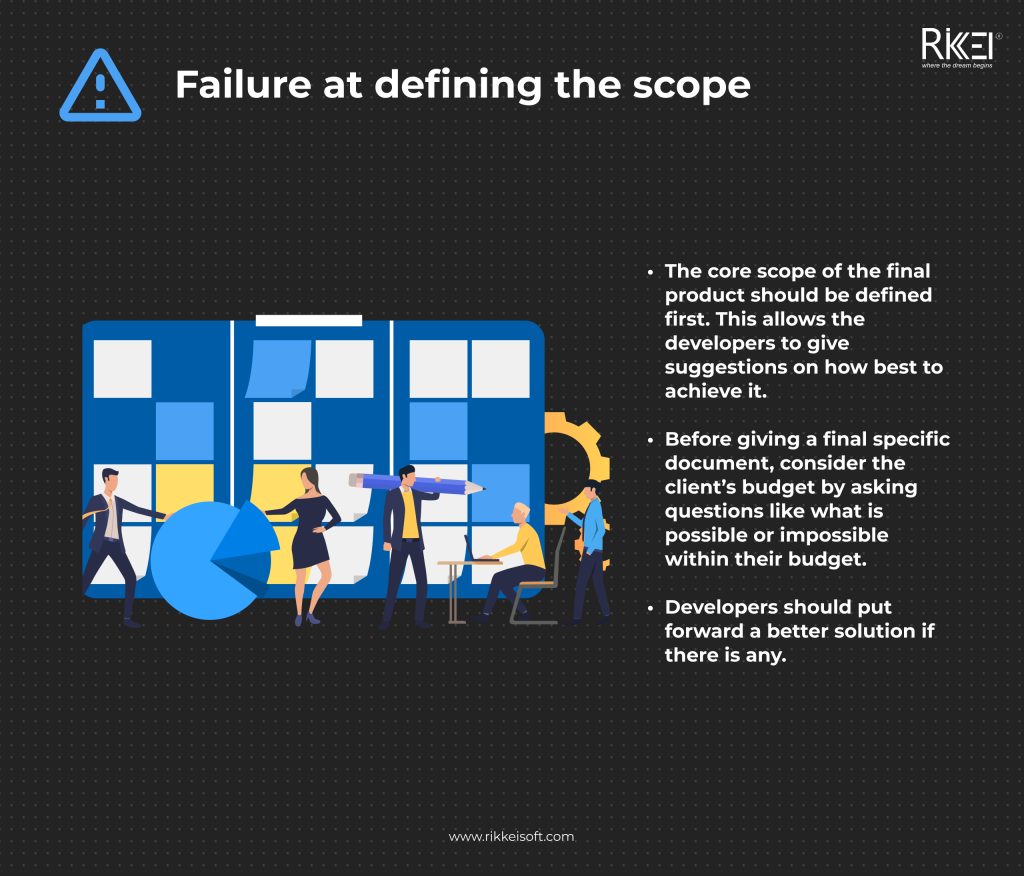
Solutions:
- The core scope of the final product should be defined first. This allows the developers to give suggestions on how best to achieve it.
- Before giving a final specific document, consider the client’s budget by asking questions like what is possible or impossible within their budget.
- Developers should put forward a better solution if there is any.
6. Not using reliable tools
One of the most alarming software development risks is choosing improper tools to aid in your process of software development. If the right tools are put into use, they’ll help you efficiently keep tabs on your process and provide reports with accurate data.
Solutions:
Opt for cloud computing tools, for example, JIRA, to improve communication between team members and stakeholders. These tools also help you to track time, testing cycles, the working progress, and other data of your project.
7. Bad timing
No matter what your project is, speed matters. In a highly competitive market, one day can either be big profits or big setbacks. Failure at timing and scheduling can arise from:
- The total project was incorrectly calculated and set in the first place
- The project manager fails to properly track employees and task status
- The functions of the final product were not decided timely
- Unexpected and emergency expansion of the project scope
- Inadequate resources
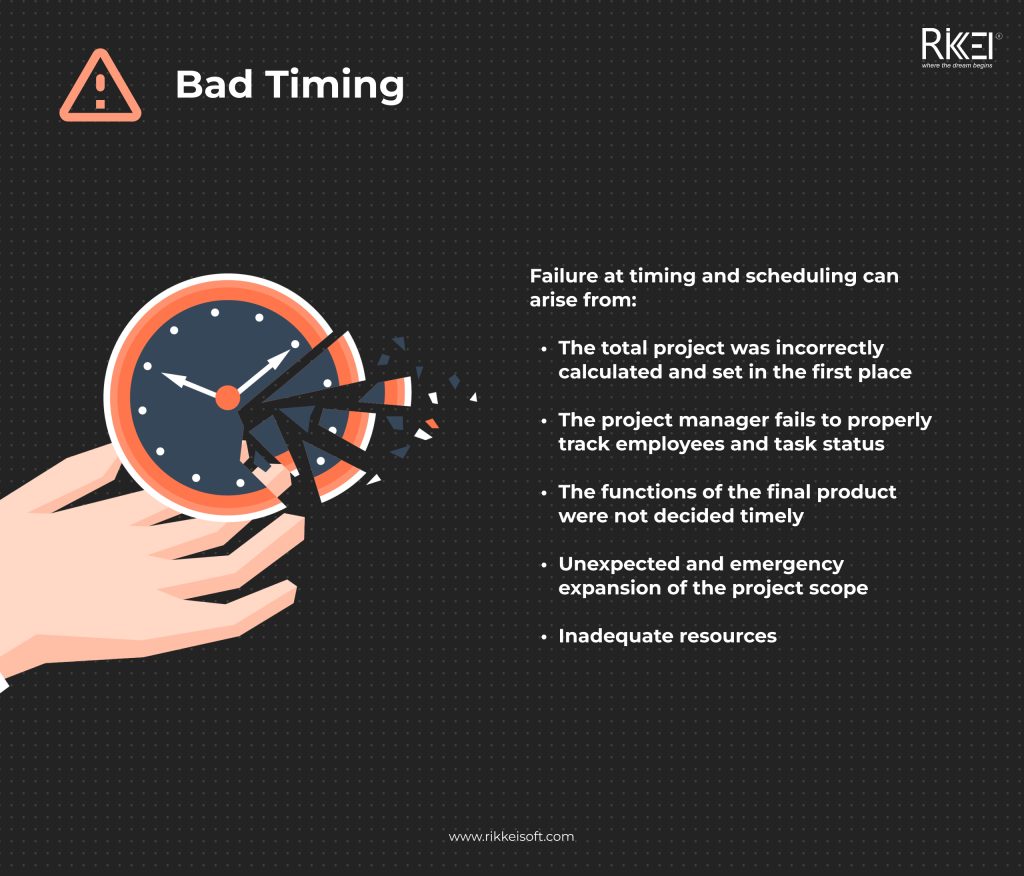
Solutions:
- To avoid poor timing and thereby lost opportunity cost, you should:
- Apply agile methodologies
- Make sure that all team members are involved in planning and estimating
- Take in feedback at all stages, starting from the first ones
- Have the Owner or Stakeholders involved
- Carry out an urgent expansion of the team size to speed up the development, however, this can dramatically affect the project budget.
Read more: Quality Assurance | Benefits & Importance
8. Inaccurate budget estimation
How the budget of the IT project is used is too important to be calculated wrongly. However, this can happen sometimes, which leads to the fact that the project is completed in the middle or far beyond the agreed cost. The main causes of this can be because the budget was calculated incorrectly in the first place. Another reason is that no funds have been reserved, or project expansion is unplanned and unexpected during the process.
Good news is the method of curbing this risk is quite straightforward.
Solutions:
- Constantly keep tabs of the budget and development process
- In case of introducing additional features – or the need for any changes, estimate their cost at the first stage
9. Poor management
The failure at effective project management is categorized as among software development risks. Many projects fail due to improper management. Poor management usually means poor communication and interaction among team members. Another definition is the insufficient qualification level of the PM (project manager) or lack of leadership and analytical skills of the PM or team leader. Poor project management can be seen as poor risk management in software development.
One of the results of this risk can be the turnover of employees: key project developers leave the team, without handing over crucial information on the project to anyone, which entails deferment in software development, failure at meeting deadlines, and budget.
Solutions:
- High expectations are always set for the project manager. They must possess the traits and skills of a strategist and tactician, let alone leadership skills. During the project, they should be deeply involved, effectively communicate with the team members, set up a strong organizational framework, and carry out elaborate documentation processes.
- Moreover, you can opt for task management software to aid in the process in addition to human factors.
10. Unexpected external risks
During running a program development, you may encounter unpredictable factors that may spell trouble. External risks in software development are not too uncommon to be excluded from the general risk list, because it is inevitable that you may face:
- Unexpected changes in the market
- The sudden growth of a rival (with more resources available)
- The implementation of new government regulations and business rules
- The changes in consumer behaviors and their priorities
Solutions:
You can hire a data analyst. Their jobs are to research the market, the country of operation, and tendencies over the world to analyze the current situation. The ultimate aim is to discern current market trends and ensure that they are favorable for the products and business model.
The latest tools (such as Big Data Analytics and Machine Learning) are also helpful in helping a data analyst achieve their goals.
Read more: Software Development Team Structure: Roles and Responsibilities
Tips to Minimize Software Development Risks
Besides solutions for each risk mentioned above, there are some additional general methods for companies to avoid software development risks more efficiently. They are:
- Business owners should establish a good rapport with the client and changes in the client’s requirements must be known throughout the project.
- Clients and organizations should turn to a trustworthy service provider, such as Rikkeisoft Software Development Service, to make sure that risks are minimized to the fullest extent.
- You must ensure that the team members are aware of the risks related to the project and opt for suitable tools to help them program fast and efficiently.
- Both clients and the service providers should agree upon a suitable software development life cycle and methodologies for their project scope.
Conclusion
So, here is a list of the most common software development risks and some tips to mitigate them. Please bear in mind that there’s no comprehensive list and it may be supplemented depending on the sophistication and scale of the project, industry, and external factors. However, a high level of expertise and a carefully planned risk management strategy significantly minimizes the risks in software development projects.
More From Blog

April 4, 2024
Big Data Performance: Maximize Your Business Value
In today’s data-driven world, organizations are constantly generating and collecting immense amounts of data to understand their customers more deeply. This data, often referred to as “big data,” holds immense potential for organizations to seek opportunities and overcome challenges. But accessing and analyzing big data isn’t enough to have proper strategies; organizations must pay attention to […]

April 4, 2024
How Real-Time Data Analysis Empowers Your Business
In today’s fast-paced business landscape, the ability to quickly make data-driven decisions has become a key differentiator for success. Real-time data analysis, the process of analyzing data as soon as it’s generated, has emerged as a powerful tool to empower business across industries. By leveraging real-time data analysis, organizations can gain timely and actionable insights, […]

April 4, 2024
Differences Between Data Science and Computer Science
Data Science and Computer Science are distinct fields overlapping in certain areas but have different focuses and objectives. The article below will help you clearly understand the differences and the close connection between the two fields. What is Data Science? Data Science is an interdisciplinary field that combines scientific methods, processes, algorithms, and systems to […]

March 28, 2024
Introduction to Data Visualization and Key Considerations for Businesses
In your opinion, what is data visualization? Your main goal is to communicate your recommendations engagingly and effectively, right? To achieve this, let’s immediately explore a method that can represent information with images. What is Data Visualization? Define data visualization and their roles in organizations First, you need to find the answer to the question: […]
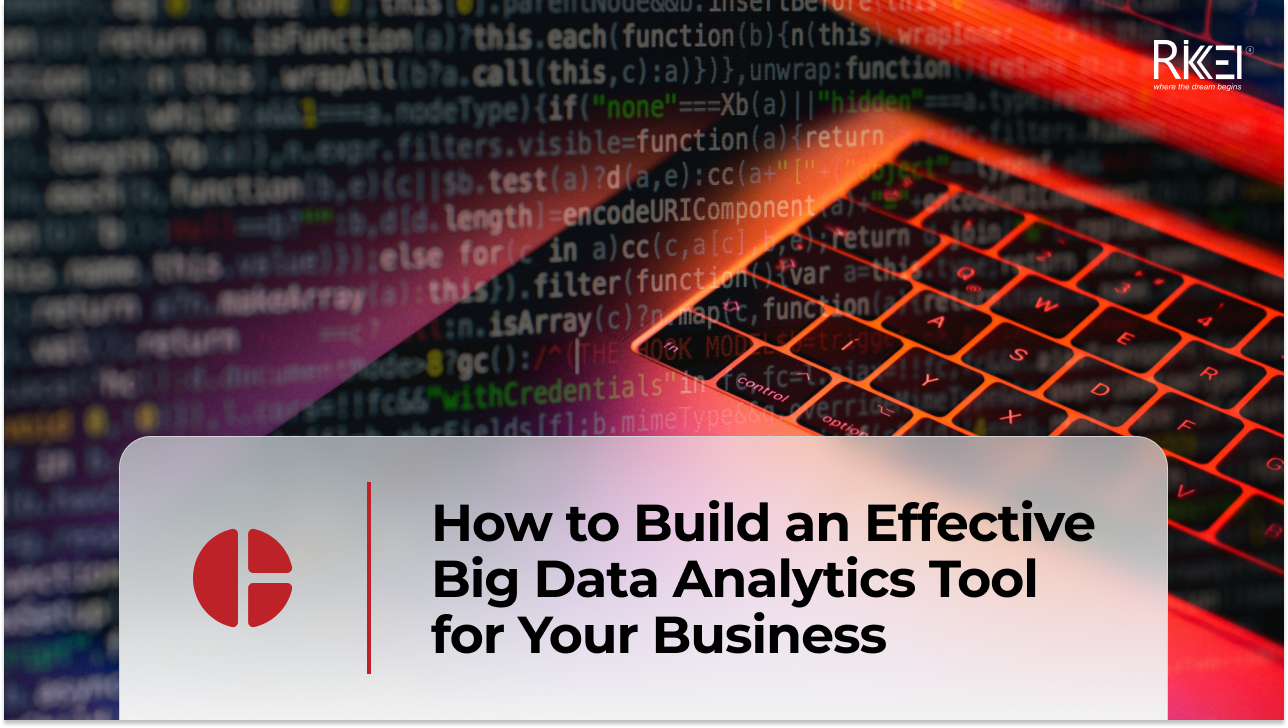
March 21, 2024
How to Build an Effective Big Data Analytics Tool for Your Business
Building an analytics tool for a business brings several significant benefits, especially in today’s business environment where data is becoming larger and more complex. So how to build an effective analysis tool for businesses, follow the article below! Assessing Business Needs Assessing business needs involves understanding the requirements, goals, and challenges of a business or […]
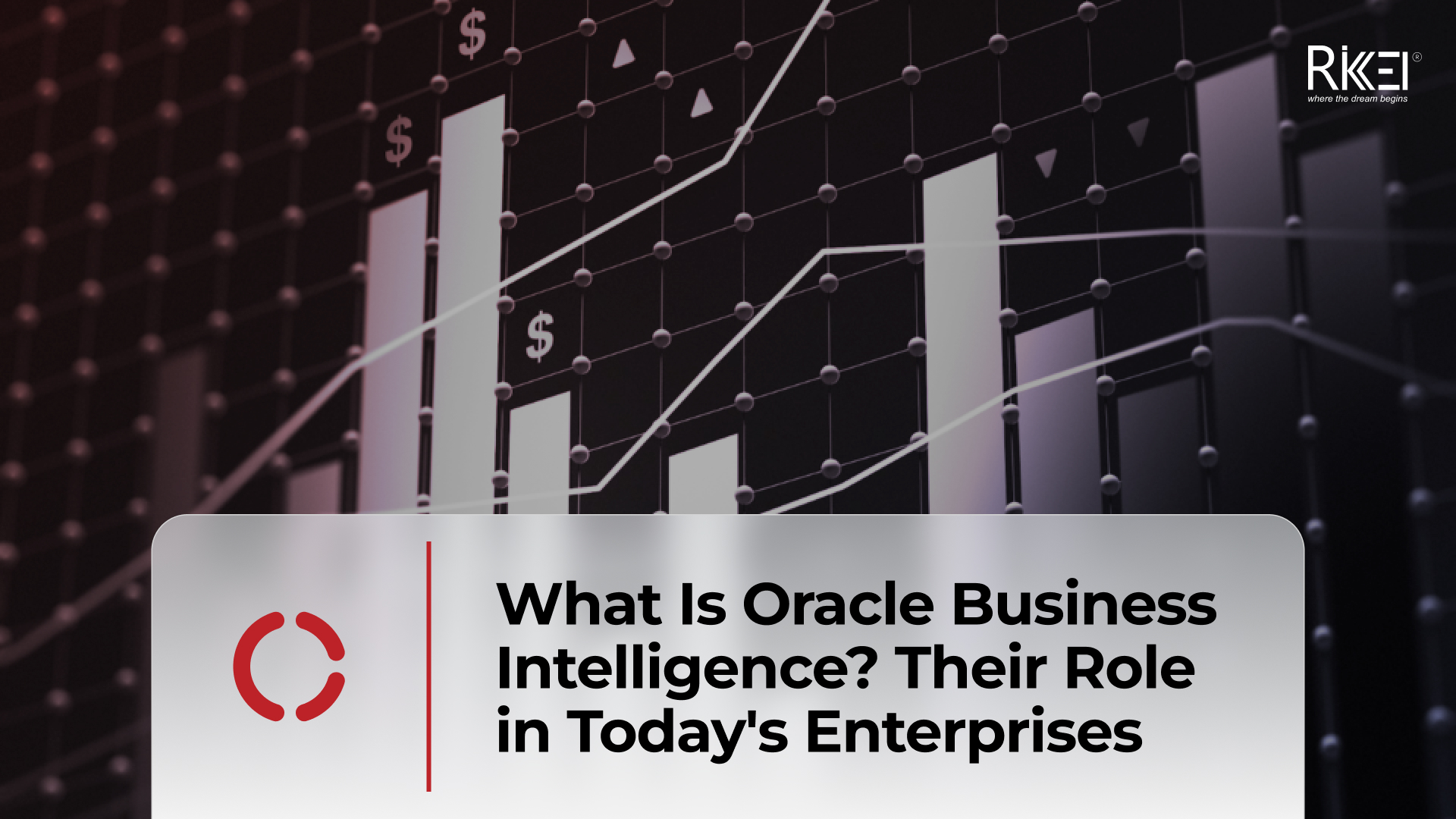
March 14, 2024
What Is Oracle Business Intelligence? Their Role in Today’s Enterprises
Oracle Business Intelligence (BI) refers to a suite of tools, technologies, and applications designed to help organizations collect, analyze and present business data. The primary goal of Oracle BI is to provide actionable insights to support decision-making within an organization. Oracle BI encompasses a range of products that enable users to gather, process and visualize […]

